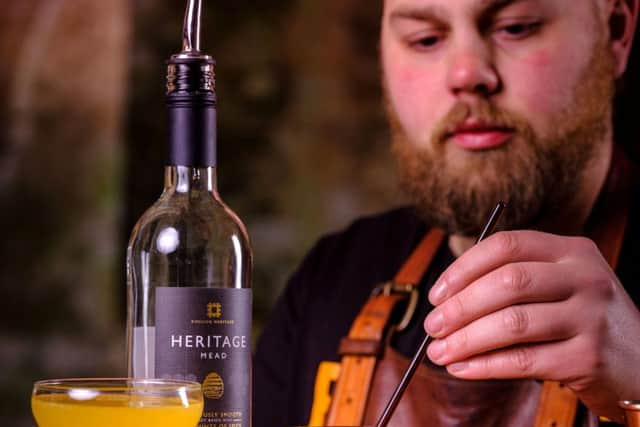It is thousands of years old but mead is what the fashionable hipster is drinking this Christmas
But in some of the country’s most historic state-owned properties, the drinks this festive season are on the house.
English Heritage, the former Whitehall body that was reconstituted as a charity three years ago, is encouraging visitors to many of its 400 castles, abbeys and stately homes to sample the oldest of all alcoholic drinks – of which it says it is now the largest retailer.
Advertisement
Hide AdAdvertisement
Hide AdMead, a concoction created by fermenting honey with water and sometimes fruits and spices, can trace its history to at least 1,700BC, and was once thought to have been the drink of the gods – falling from the heavens as dew and then gathered by bees.


It was also the drink of choice for Vikings, and was presented to newlyweds as a honeymoon gift.
But its appeal has transcended the drift from flagon to cocktail umbrella, and the organisation now says it sells a bottle of mead every 10 minutes on its website and at sites such as Rievaulx Abbey near Helmsley.
It is marketing the beverage as “the new hipster drink” and handing out free samples to visitors.
Advertisement
Hide AdAdvertisement
Hide Ad“It’s wonderful that this very old drink is now being discovered by a whole new generation,” said Cameron, English Heritage’s collections curator.
“There is evidence of mead being consumed thousands of years ago and it was the power drink of ancient Europe before wine-making had developed.”
Mead was being produced during the Roman period in Britain. When imports of wine began, honey was also used to make a spiced drink called mulsum.
“We’ve found evidence of mead being produced and stored at Tintagel Castle in Cornwall, in the fifth and sixth centuries AD for use in great feasting events,” Mr Moffett said.
Advertisement
Hide AdAdvertisement
Hide AdIt is not Vikings but other individuals renowned for their unruly beards who are English Heritage’s target market.
A 10 per cent increase on annual sales and a desire to bolster its hipster credentials has prompted a partnership with a “cocktail bar and meadery” in Birmingham to create three new mead cocktails, poured over ice and served with an orange zest garnish unlikely to have been enjoyed by the Vikings.
Their creator, Samuel Boulton, at The Vanguard bar, said mead was “taking off” with a younger generation, with interest perhaps fuelled by the medieval-inspired TV series, Game of Thrones.
“Mead has sometimes had quite an old world reputation, but we’ve seen that dramatically change over the last five years,” he said.
Advertisement
Hide AdAdvertisement
Hide Ad“You could definitely call mead the new up and coming drink and our customers really enjoy that historical throwback with the modern twist.”
English Heritage is responsible for more than 30 historic buildings in North, South and East Yorkshire, including Clifford’s Tower in the centre of York, Fountains Abbey, Whitby Abbey and the castles at Scarborough, Helmsley and Pickering. It also looks after the more recent Cold War bunker in York.